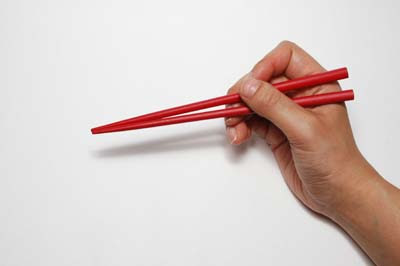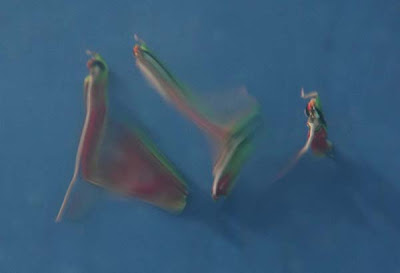As you may or may not know I live in Nagoya, a city situated in the middle of the Japanese mainland. I do not live in Okinawa. There is a surprisingly large amount of people in Nagoya who are not from Okinawa and it has often been noted that with it’s conservative character, Nagoya is very unlike Okinawa (unless you count the modern architecture which is the same everywhere).
Despite not being Okinawa, the number of Okinawan dance groups and music clubs in this region is astounding. The style is prominent enough to be included into the Nagoya parade each year, it has it’s own events throughout the prefecture and a network of supporting committees run by volunteers with a level of dedication that would shame most governments. What is it about the music of Okinawa that provokes this kind of involvement?
Okinawan music can be simplified into three groups. Minyo (folk music), Eisa (festival music) and pop music, with famous solo and group artists such as Natsukawa Rimi and Orange Range.
The reservoir of Okinawan Minyo is added to at the staggering rate of three to four hundered new songs a year. Try to find any other region in Japan with a folk scene like that.
The Jamisen, the Okinawan shamisen, is shorter than it’s mainland counterpart and covered with snake skin rather than cat skin. During the war, people used whatever tins and wire came to hand to make their Jamisen and continued to make music.
The singing style is melodic, and singers modulate their voices to accompany the sanshin. Songs cover everything from being a taxi driver to lost love. They are used as a lullaby for the children and some have all the moral content of a fable. At their roots they are of course a social tool, but as the popularity of Okinawan Minyo has increased, it has become a much appreciated art form, with tickets for the live events priced accordingly.

Eisa began with the Okinawan hand dancing style. A distinctive and slightly batty looking dance, but certainly less daft than the round and round dance done to the theme of Top Gun.
With the improvement of the local economy in Okinawa after the war came the drums. The Eisa moves at a fast pace and encourages people to join in. It is a style that has proven to be immensely popular on the mainland, and in the same way that tribal drumming took off back home, the Eisa encourages 一体感 (いったいかん), a sense of common identity. In this sense it is not unlike a Bon-Odori on uppers.

The spread of Eisa is probably due to the spread of Okinawans into the mainland workforce after Okinawa was subsumed into “Japan”. Like Irish folk music in the U.K it seems to attract and involve people from all walks. It is a mark of the tenacity of the Okinawan people that, like the Irish, they suffered the persecution and prejudice of the mainland but won through with their positive and danceable music.

The colder winter months are traditionally off periods for the Eisa groups as they are outdoor festival types, Okinawa being the semi-tropical region that it is. Sadly, the pop group Orange Range has yet to take a break of any significance, but one lives in hope.








 Eisa began with the Okinawan hand dancing style. A distinctive and slightly batty looking dance, but certainly less daft than the round and round dance done to the theme of Top Gun.
Eisa began with the Okinawan hand dancing style. A distinctive and slightly batty looking dance, but certainly less daft than the round and round dance done to the theme of Top Gun. The spread of Eisa is probably due to the spread of Okinawans into the mainland workforce after Okinawa was subsumed into “Japan”. Like Irish folk music in the U.K it seems to attract and involve people from all walks. It is a mark of the tenacity of the Okinawan people that, like the Irish, they suffered the persecution and prejudice of the mainland but won through with their positive and danceable music.
The spread of Eisa is probably due to the spread of Okinawans into the mainland workforce after Okinawa was subsumed into “Japan”. Like Irish folk music in the U.K it seems to attract and involve people from all walks. It is a mark of the tenacity of the Okinawan people that, like the Irish, they suffered the persecution and prejudice of the mainland but won through with their positive and danceable music.  The colder winter months are traditionally off periods for the Eisa groups as they are outdoor festival types, Okinawa being the semi-tropical region that it is. Sadly, the pop group Orange Range has yet to take a break of any significance, but one lives in hope.
The colder winter months are traditionally off periods for the Eisa groups as they are outdoor festival types, Okinawa being the semi-tropical region that it is. Sadly, the pop group Orange Range has yet to take a break of any significance, but one lives in hope.



 I'm a bit lost as to the fascination with knives, guns and the like. After a brief period of interest during my teens, and the purchase of a particularly fine sheath knife in a scary weapons store in South Africa, I lost interest. No real need for them in daily life, although I understand the interest in good workmanship.
I'm a bit lost as to the fascination with knives, guns and the like. After a brief period of interest during my teens, and the purchase of a particularly fine sheath knife in a scary weapons store in South Africa, I lost interest. No real need for them in daily life, although I understand the interest in good workmanship. However, it was fun taking some snaps of the blade yesterday, trying to give a Japanese feeling to the pictures. Only half successful, but cause for much laughter at our home party last night as non-knife fanatic friends joked about the oddness of sitting a knife upon a pole in a Japanese garden.
However, it was fun taking some snaps of the blade yesterday, trying to give a Japanese feeling to the pictures. Only half successful, but cause for much laughter at our home party last night as non-knife fanatic friends joked about the oddness of sitting a knife upon a pole in a Japanese garden.
































